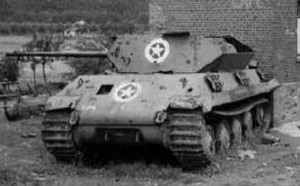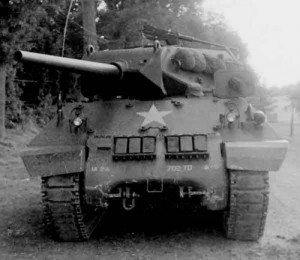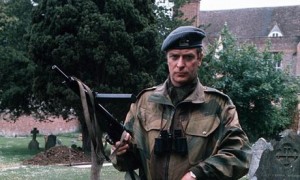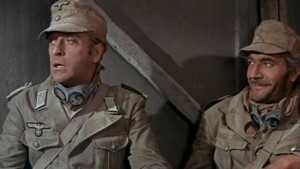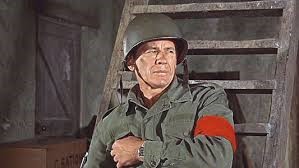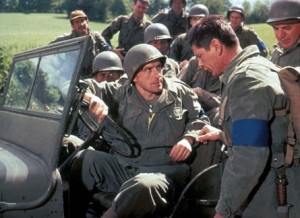Few things could strike fear into Allied soldiers like German tanks could, the sight of a Panther tank, was often enough to make Allied tank crews and infantry baulk.
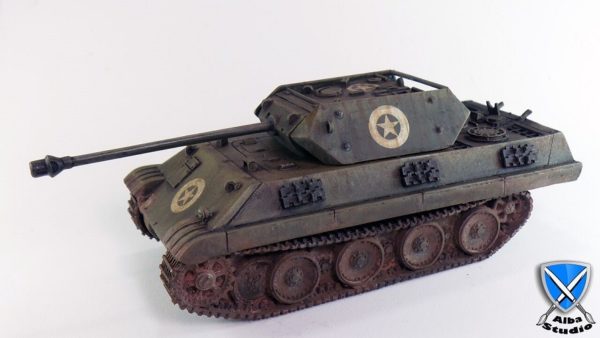
Even worse if you couldn’t see it. The Germans were highly adept at camouflage schemes, laying ambushes and remaining hidden, but at least you could call on a lot of support from the air, or from artillery to dislodge or destroy the enemy.
About the only thing worse would be if everyone around you thought they were friendly and did not immediately open fire on them.
It is not a new idea, disguising your war machine to look like one of the enemy’s, it has been done throughout history, from the Trojan horse to far more modern uses and we have all seen it done in various movies. Even the Terminator looks like his enemy to better infiltrate and destroy his foe (is that a plug for another Warlord product).
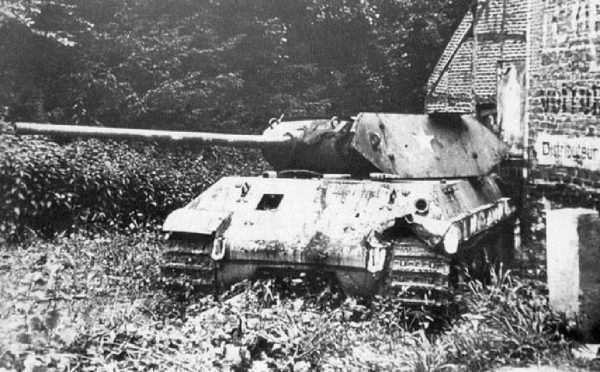 (A damaged and abandoned Ersatz Panther/M10).
(A damaged and abandoned Ersatz Panther/M10).
So it should come as no real surprise that the Germans did exactly the same thing.
SS Panzer Brigade 150 was formed to spread confusion and distraction as well as infiltration to better aid their own troops advance, most specifically to capture the bridges at Amay, Engis and Huy on the Meuse river for the German winter offensive through the Ardennes in December 1944. This part of the offensive was given the name “Operation Grieff”.
Although it was outwardly an SS Brigade, its formation was unusual in that it numbered very few SS. Of its 2500 men, (it was supposed to have 3800) 1000 were Heer, another 800 were Luftwaffe, 200 from the Kriegsmarine, with only some 500 drawn from the SS. Many if not all of the Brigade could speak or had some understanding of English, although less than a dozen had the command of American idioms and slangs to pass themselves off as a GI.
The unit was also to be commanded from 14 December onwards, by Obersturmbahnfuhrer Otto Skorzeny, one of Hitler’s favourites, and soon to be christened “the most dangerous man in Europe”
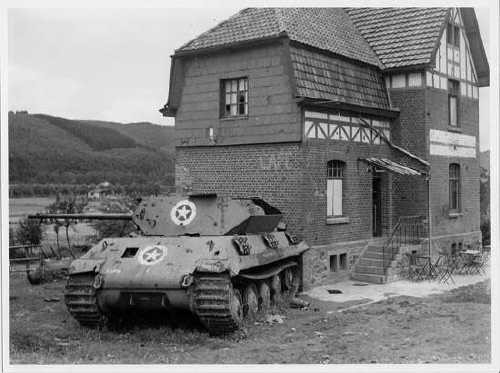
Initially the Brigade was to use captured Allied vehicles and was issued two Sherman tanks, but these never saw service because of mechanical difficulties. However a number of jeeps, armoured cars and trucks were used successfully. US Army uniforms were issued and the Brigade was tasked not just with the capture of the Bridges but to sow dissent and confusion behind Allied lines.
American weapons were to prove to be in short number also, and only enough were available to arm a small portion of the Brigade. The Brigade was also issued (numbers vary) between 4 and 10 Panther tanks, and a number of StuG III all to be disguised as Allied tanks.
The Ersatz Panther, was to be made to look like an M10 with the addition of thin sheet steel plates, their cupolas were removed, and then they were painted Olive Drab and given Allied markings.
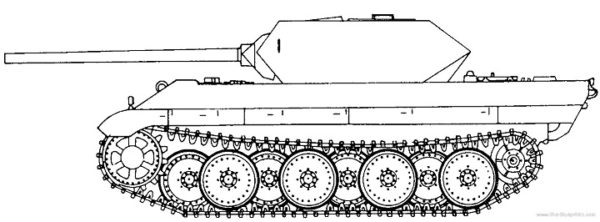
The Brigade was supposed to have 10 coded B1-10, but it may have had as few as 4, but no matter the number the impact and their subsequent place in history far outweighs the actual number produced.
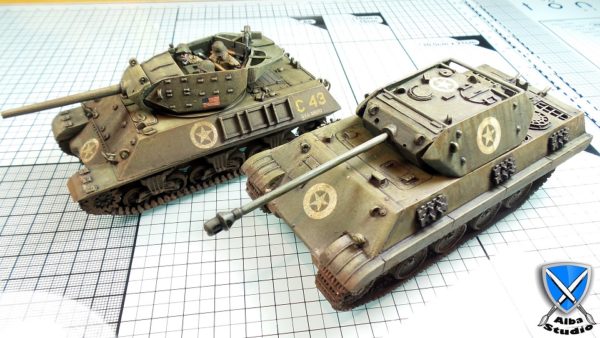
The two pictures above should show how easy it would be at first glance to confuse the two, and just how convincing it is. (Remember you are looking for the differences, at range, in the heat of battle or in low visibility the disguised Panther would most likely pass as a friend)
And now of course the Warlord “Ersatz Panther” painted by Tom Howley of Alba Studios (who also did the M10).
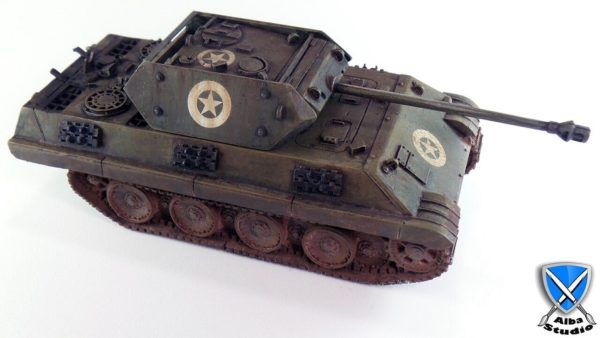
Disguised Tanks
A German vehicle in your force can be disguised as Allied. This means that when an enemy air strike is called in, the vehicle counts as an enemy vehicle rather than a German one (so it can only be attacked by the enemy aeroplane if the air strike goes wrong and the enemy rolls a one!).
In addition, any enemy unit wishing to target the disguised vehicle from more than 12″ away must first pass a Morale check. If the test is failed, the enemy must choose a different target instead. Once a unit recognizes the disguised tank as German, by either passing the test or being within 12″ of the disguised tank, the tank can be targeted as normal by all enemy ground forces (but the air strike advantage remains in effect!).Ostfront page 47 or Battleground Europe page 85 for further information.

The muzzle brake is clearly visible on the Warlord model, it would appear that some of the Ersatz Panthers had these removed. Some however did not. Of course by this time many of the US Tank Destroyers had their own 76mm guns fitted with muzzle breaks.
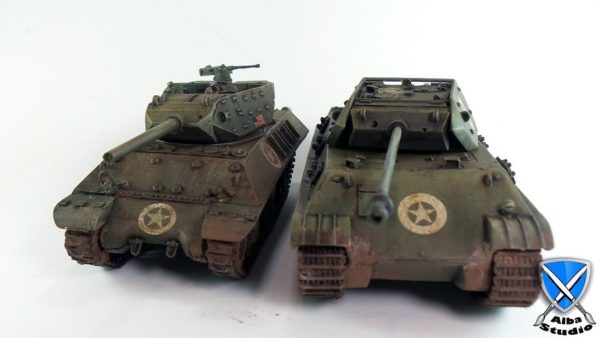
Side by side you can really see how confusion would reign.
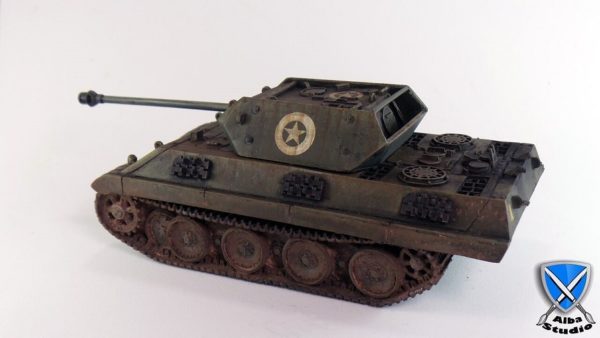
This last picture, shows the extent of the metal sheets added. The turret, front plate and the rear were all altered to resemble an Allied tank destroyer. The Germans even went to the extent of placing spare track links in the fashion of the US M10s. You can just see the yellow recognition panel on the rear left side the Germans added so they would not fire on their own.
Don Stewart (Alba Studio)
Sources include:
Wikipedia/BBCHistory/Axishistory.com
Some other “false flag” moments
(isn’t that the same bloke…?)
And my favourite
“Armbands are red, sometimes they’re blue”
Don Stewart (Alba Studio)
Do you have an article within you? Are you itching to show your collection to the world of Bolt Action? Then drop us a line with a couple of pictures to info@warlordgames.com

